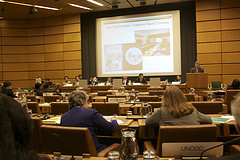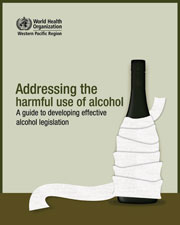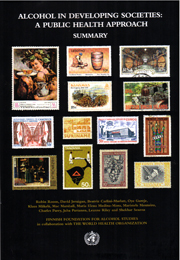
UNODC World Drug Report 2009 published
Global markets for cocaine, opiates and cannabis are steady or in decline, while production and use of synthetic drugs is feared to be increasing in the developing world, says the 2009 edition of the UNODC World Drug report.

For the first time, UNODC presented the World Drug Report in a variety of media formats to cater to its wide audience. The digital media page, dedicated to the report, presents a live webcast of the launch in Washington, D.C., including a question and answer session with the international journalists present. The page also presents video and audio pod casts of experts discussing the different drug themes presented in the report. The page presents the executive summary of the report and the press release, which have been translated into the six official languages of the United Nations.
A downward trend in major markets
Opium cultivation in Afghanistan, where 93 per cent of the world's opium is grown, declined by 19 per cent in 2008. Colombia, which produces half of the world's cocaine, saw an 18 per cent decline in cultivation and a staggering 28 per cent decline in production compared to 2007. Global coca production, at 845 tons, is at a five year low, despite some increases in cultivation in Peru and Bolivia, according to the World Drug report 2009.
Cannabis remains the most widely cultivated and used drug around the world, although estimates are less precise. Data also show that it is more harmful than commonly believed. The average THC content (the harmful component) of hydroponic marijuana in North America almost doubled in the past decade. This has major health implications as evidenced by a significant rise in the number of people seeking treatment.
In terms of consumption, the world's biggest markets for cannabis (North America, Oceania, and Western Europe), cocaine (North America and some parts of Western Europe) and opiates (South East Asia and Western Europe) are all flat or down. Data is less clear for developing countries.
News on synthetic drugs - amphetamines, methamphetamine and ecstasy - is mixed. Use has levelled off in developed countries. In the developing world, there is concern that production and consumption may be growing, although the data is limited.
No trade-off between public health and public security

"Proponents of legalization can't have it both ways," said Mr. Costa. "A free market for drugs would unleash a drug epidemic, while a regulated one would create a parallel criminal market. Legalization is not a magic wand that would suppress both mafias and drug abuse," said Mr. Costa. "Societies should not have to choose between protecting public health or public security: they can, and should do both," he said. He therefore called for more resources for drug prevention and treatment, and stronger measures to fight drug-related crime.
How to improve drug control
First, drug use should be treated as an illness. "People who take drugs need medical help, not criminal retribution," said Mr. Costa. He appealed for universal access to drug treatment. Since people with serious drug problems provide the bulk of drug demand, treating this problem is one of the best ways of shrinking the market.
Second, Mr. Costa called for "an end to the tragedy of cities out of control." In the same way that most illicit cultivation takes place in regions out of government control, most drugs are sold in city neighbourhoods where public order has broken down. "Housing, jobs, education, public services, and recreation can make communities less vulnerable to drugs and crime," said Mr. Costa.

Fourth, he called for greater efficiency in law enforcement. He encouraged police to focus on the small number of high profile, high volume, and violent criminals instead of the large volumes of petty offenders. In some countries, the ratio of people imprisoned for drug use compared to drug trafficking is 5:1. "This is a waste of money for the police, and a waste of lives for those thrown in jail. Go after the piranhas, not the minnows," said Mr. Costa.
![]()
![]()
Developed with CustomPublish CMS by Nettinfo AS




